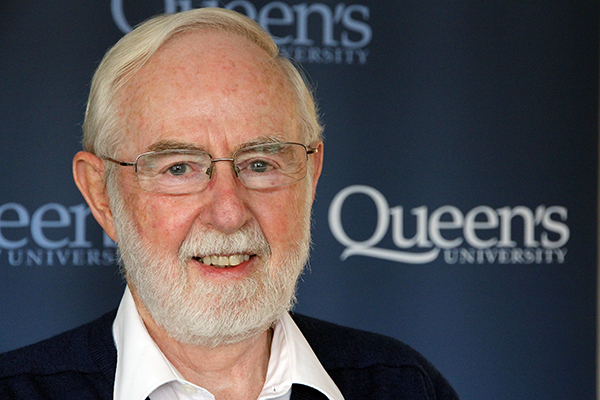After being named the winner of the Nobel Prize in Physics on Oct. 6, Queen’s University professor Arthur McDonald said he is taking time to answer all 600 unanswered emails in his inbox.
Life, he said, “has been just so busy.”
A professor emeritus at Queen’s, McDonald won the prize, along with Japanese scientist Takaaki Kajita, for discoveries relating to the behaviour of neutrinos, an elusive solar particle. McDonald and Kajita found neutrinos “oscillate” as they travel from the sun, which means these particles likely have mass.
McDonald and Kajita’s discovery opened new possibilities with research into particles.
“This prestigious award confirms that the results that we obtained are indeed very important, defining basic properties of neutrinos and confirming models of energy generation in the sun with great accuracy,” McDonald said.
McDonald and a 130-person international team conducted their experiments at the Sudbury Neutrino Observatory (SNO), a large particle detector built in a copper mine near Sudbury, Ont. Construction on the lab broke ground in 1990 and the experiments began in 1997.
SNO expanded to become SNOLAB, where more scientists were able to conduct particle experiments. The construction of SNO greatly involved scientists largely from Carleton and a number of other universities.
“The ultra-low radioactivity environment at SNOLAB will enable cutting edge measurements to seek the absolute value of neutrino masses, gain insight into the generation of matter in the early universe, and seek the dark matter particles that we know make up most of our galaxy,” McDonald added.
SNOLAB was built by Carleton and is operated by a consortium of universities, according to David Sinclair, a Carleton professor who led a group of scientists from the university in building and designing SNO.
“Large experiments now require many people, each bringing a specific expertise, and the experiments only succeed when all of the pieces come together and work well,” Sinclair said. “This was certainly the case for SNO.”
Sinclair was also the principle investigator and initial lab director for the project. McDonald, who is SNOLAB’s current director, and Sinclair have worked together since 1985.
“Fortunately here in Canada, we have great opportunities for world class measurements at SNOLAB, the international underground laboratory created so effectively by . . . Sinclair and his team,” McDonald said.
The funding for construction of the lab was secured by Sinclair in the late 1980s and he also oversaw the opening operations of the lab.
McDonald said the prize does not only belong to him but to the entire team that worked alongside him.
“The next generation of students at Carleton and elsewhere are receiving the opportunity to perform leading measurements right here in Canada, and perhaps have a ‘eureka’ moment as we did,” McDonald said.
As a tip for aspiring Nobel Prize winners, McDonald said, “Work hard, follow your inspiration, and choose excellent collaborators, as I was fortunate to have in the members of the SNO collaboration.”






